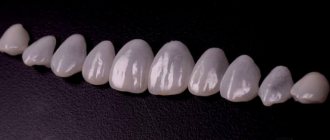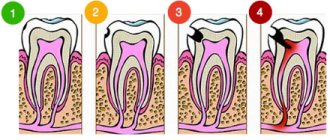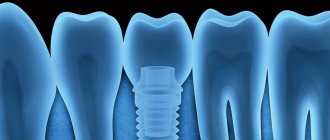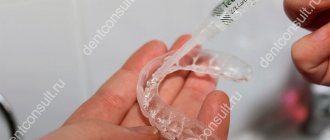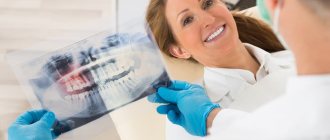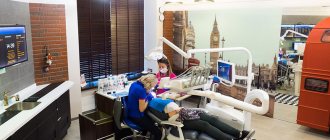Treatment of malocclusion is one of the most popular services in the dental department of the CELT clinic. Advanced orthodontic technologies used by our specialists are able to effectively correct dental anomalies. In case of minor malocclusions, our specialists use dental plates.
Having decided to install a dental plate, you will receive a removable or non-removable orthodontic system in the form of a metal arch with a plastic base made of hypoallergenic material. Its design provides for the presence of clamps. The purpose of the system is to apply gentle pressure and thus correct the dentition. To do this, it has a screw, which must be adjusted as you wear it. This approach allows you to increase the load on the dentition and apply more pressure.
Manufacturing of fixed and removable dental plates
carried out on an individual basis, and they themselves allow:
- adjust the position of the incisors;
- increase or decrease the width of the palate;
- adjust the shape of the jaw;
- accelerate or slow down jaw growth depending on the identified defects.
At CELT you can get advice from a dental specialist.
- The cost of an orthodontist consultation is 2,000
Make an appointment
Indications
In the vast majority of cases, dental plates are used to correct teeth in children under the age of twelve. It is during this period that intensive development of the jaws occurs, due to which the treatment will be as effective as possible. During this period, indications for use are:
- malocclusion;
- incorrect position of teeth;
- crowding or large spaces between teeth;
- too slow or, on the contrary, intense jaw growth.
Plates for teeth
It is also used for treatment in
adults
. In this case, the indications are as follows:
- maintaining the results of orthodontic treatment using braces;
- insignificant alignment of teeth within the dentition.
It is worth noting that competent and timely use of dental plates in childhood gives excellent results - and this despite the fact that its price is much lower than braces! This is why we recommend that parents seek treatment on time: you will not only save money, but also eliminate discomfort for your children (after all, plates are not as noticeable on the teeth as braces).
Contraindications
Orthodontic plates have a minimum of contraindications. So, the absolute ones relate to the following:
- individual intolerance to the materials from which structural elements are made;
- dental periodontal disease, in which there is atrophy of bone tissue and a decrease in the height of the interdental septa;
- diseases of the respiratory system.
There are also relative contraindications. These are carious lesions of the teeth: before applying the plates, they must be eliminated.
Types of plates for teeth
There are two types of bite correction plates:
- Non-removable - fixed on the outer surface of the teeth. Their design includes a system of locks, through each of which a steel arc is threaded. The latter, restoring its original shape, sets the teeth in the required direction of movement. The time it takes to correct teeth with a non-removable plate is about two years, and the treatment method itself can be used for both children and adults;
- Removable ones have a simpler design compared to non-removable ones. They are made from plastics that are non-toxic to the human body. They are fixed to the teeth using metal hooks. In addition, their design may include auxiliary screws and springs. Removable teeth straightening plates can be removed while eating or brushing your teeth. The period of wearing them varies from one and a half to two years and is determined by the doctor.
Fixed dental plates, the price of which is significantly higher than their removable counterparts, are rightfully considered more effective. The choice of type depends on the complexity of the case.
In addition, classification is carried out based on the purpose of application. The types of plates are presented in the table below:
| Type of plates | What is it used for? | Peculiarities |
| Mechanical | Optimal for correcting crooked teeth and helping to straighten them. | They have clasps, arches and screws made of metal. |
| Equipped with a hand-shaped process | Allows you to correct an individual tooth. | The design is such that it allows you to apply pressure to one specific tooth. |
| Functional | They stimulate the development of the jaw and chewing muscles, allow you to restore facial muscles and even correct the shape of the face due to the restructuring of the dentition and the regulation of the temporomandibular joints. | Requires wearing for 14 hours a day. They fix the jaw in one position and are complex structures, when worn, the child cannot eat or speak. |
| Single jawed | Used to correct anomalies of individual teeth on one jaw. | The design includes special screws |
| Vestibular | They allow you to remove the soft tissue that has formed between the teeth by moving it away. | They are placed between the teeth and lips or between the teeth and cheek, depending on the location of the abnormal area. |
| With retraction type arc | Effective in straightening front teeth. | The plate is installed in such a way that it covers the teeth from the outside. |
| With arc with active pusher | Used to correct the palatal position of the upper teeth. | The arc has a base made of hypoallergenic plastic and a spring. |
Dental plates for children
Having looked at the photos before and after wearing dental plates on children’s teeth, you will conclude that they are very effective - and you will be right. With the right approach, they can be called the best way to correct a number of malocclusions. Their use is advisable under the age of 12 years during active jaw growth. To correct serious anomalies, non-removable structures are used. If there is a slight curvature or prevention is required, removable plates are ideal. As already mentioned, the production of plates is carried out on an individual basis and requires taking impressions and making plaster models. It is very important that the surface relief of the gums and palate coincide exactly. To do this, a special adjustment is carried out, which takes no more than 10 minutes.
Why do children have malocclusion?
Malocclusion in children is very common and should not cause increased concern among parents. This is not a disease, but a developmental feature, and it can be corrected quite easily. Most often, the bite is crooked for the following reasons:
- the child inherited an atypically small jaw from his parents;
- teeth erupted faster than the jaw grew;
- the baby quickly developed caries, so he had to have his baby teeth removed;
- the child often bites his lip, sucks his finger, or has other bad habits that negatively affect his bite.
Also, problems with bite occur in boys and girls who often catch colds and cannot breathe through their nose. If nasal breathing is difficult due to enlarged adenoids, the small patient has to breathe through the mouth willy-nilly, which can affect the bite.
While the teeth are still baby, you can still come to terms with the curvature of the bite. But as soon as they begin to change to permanent ones, you need to start visiting the orthodontist to prevent possible problems. The sooner you start correcting your bite, the easier and cheaper it will be to get your teeth into the correct position. Most likely, for this, the doctor will put plates on the child’s teeth.
ATTENTION:
For the manufacture of children's orthodontic plates, hypoallergenic materials that are completely safe for health are used.
Correct your bite or dental defect with invisible aligners Find out what it is
Are there any difficulties?
According to reviews, dental plates are effective, but in the case of children there is one problem. It lies in the fact that you need to wear them at least 22 hours a day for 12 to 18 months. This does not always please young patients who are not delighted with the presence of a structure on their teeth, which requires getting used to and which may cause teeth pain at first.
It is important to explain to the child that plates are much less noticeable than braces, which will have to be worn if the plate does not give the desired effect... And to achieve the effect, you need to use it correctly. It is better to undergo a much simpler course of treatment now than to resort to much more complex treatment in adolescence - especially since the result will be obvious! The child needs to be taught:
- Wear the plate in the morning;
- Remove the plate to brush your teeth before going to bed;
- Do not remove the system during the day;
- Tighten the structure screw in a timely manner.
Is it painful to wear?
Patients do not experience severe pain even during the adaptation period - for several days while they get used to the orthodontic apparatus. However, many may experience quite severe discomfort. In this case, discomfort is almost always associated with the presence of a foreign solid object in the mouth.
Basically, all unpleasant sensations go away in a maximum of a week and a half. However, in cases where wearing is not indicated constantly, but only for a certain number of hours during the day, addiction can extend over a longer period.
Manufacturing and design features
Making plates to correct a bite is not an easy process, requiring a preliminary x-ray examination of the dentition. In addition, it is preceded by taking impressions and making control models. By conducting a preliminary assessment using them, the orthodontist decides how accurate the model is and whether it is suitable for the patient. If necessary, correction and re-fitting are carried out.
Plastic is used to make the base of the plate. The shape of the base exactly repeats the relief of the dental contour and gum surface. The base itself is durable and moderately rigid. The arc of the plate is made of steel wire and has hooks that are fixed on the cutters. As the position of the teeth changes and the jaw grows (when it comes to a child), the system is corrected.
Benefits of orthodontic plates
Although bite plates are only effective for minor malocclusions, they have a number of other benefits:
- Convenient to use. The design of the plates allows you to easily and quickly remove them while eating or brushing your teeth;
- Prompt production. The average production time for plates is from 2 to 4 weeks. At the same time, a removable type structure is manufactured faster than a non-removable one;
- Affordable price. The average price of a plate for correcting a bite is 2 times lower than the price of inexpensive braces.
What is better or worse than braces?
It is hardly worth comparing braces and orthodontic plates, since they perform different functions and have different indications for installation . At the same time, we can name the advantages and disadvantages of the plates, which will help many patients make their choice.
Advantages:
- the possibility of installation in childhood, when the jaw system is not yet fully formed;
- often shorter wearing period;
- removable design gives more freedom and comfort to the patient;
- do not cause pain.
Flaws:
- cannot be used in complex cases of malocclusion;
- it is not possible to make precise adjustments to the position of each tooth;
- cannot always help adult patients, since their tooth mobility is greatly reduced due to the completion of the formation of the dentofacial system.
What are the disadvantages of dental plates?
The use of records has a number of limitations. First of all, they are due to the fact that the functionality of the plates does not allow them to move teeth. It only makes it possible to hold them in a certain position, which does not allow them to be used to correct serious anomalies. At the same time, it is worth noting that often the reason for the insufficient effectiveness of treatment is a reduction in the time of wearing the structure. As for other disadvantages, these include:
- the need for long-term use;
- a number of uncomfortable sensations during adaptation;
- minimal pressure compared to braces;
- age restrictions for use;
- the need for constant monitoring by parents (in the case of children).
Installation of plates
Installing the plates is a fairly quick, painless process that takes no more than 10 minutes. Most of the time is spent on final adjustment of the system. That is why the first installation of removable plates is carried out in the presence of the attending physician. The doctor will give detailed instructions on the rules for its use, care and how to properly regulate the tension of the arc. The first correction is carried out after the appearance of a visible result - it is this that determines the subsequent course of treatment and its duration. It is important to understand that at first the plate will be perceived as a foreign body in the mouth, which can cause discomfort, impaired diction and increased salivation. The adjustment period averages up to one week; after this the structure ceases to be felt.
How to care for the plates?
In order for the plate to serve the required time and not break, it is necessary to provide it with appropriate care. It is as follows:
- brushing with toothpaste every day;
- disinfection every week;
- storage in a special container, closed;
- oiling the screw;
- removing the plate while eating, brushing teeth, practicing martial arts, boxing and water sports.
Do you dream of beautiful teeth? Contact the orthodontists of the multidisciplinary clinic CELT!
Make an appointment through the application or by calling +7 +7 We work every day:
- Monday—Friday: 8.00—20.00
- Saturday: 8.00–18.00
- Sunday is a day off
The nearest metro and MCC stations to the clinic:
- Highway of Enthusiasts or Perovo
- Partisan
- Enthusiast Highway
Driving directions
How much does a removable plate cost and what does its price depend on?
The cost of a removable plate for a child’s teeth depends on the following factors:
- the nature of the pathology that needs to be corrected;
- number of screws on the plate;
- the need for additional dental treatment at the dentist after wearing a corrective plate.
The approximate price of a removable plate for a child’s teeth with one screw included is from 20 thousand rubles, with two or three screws – from 24 thousand rubles. In addition, you need to purchase a storage solution, care products, and a storage box - about another 3 thousand rubles.
You can get a full consultation on installing a plate for children’s teeth from a dentist at the Zuub clinic, which specializes in pediatric orthodontics.
